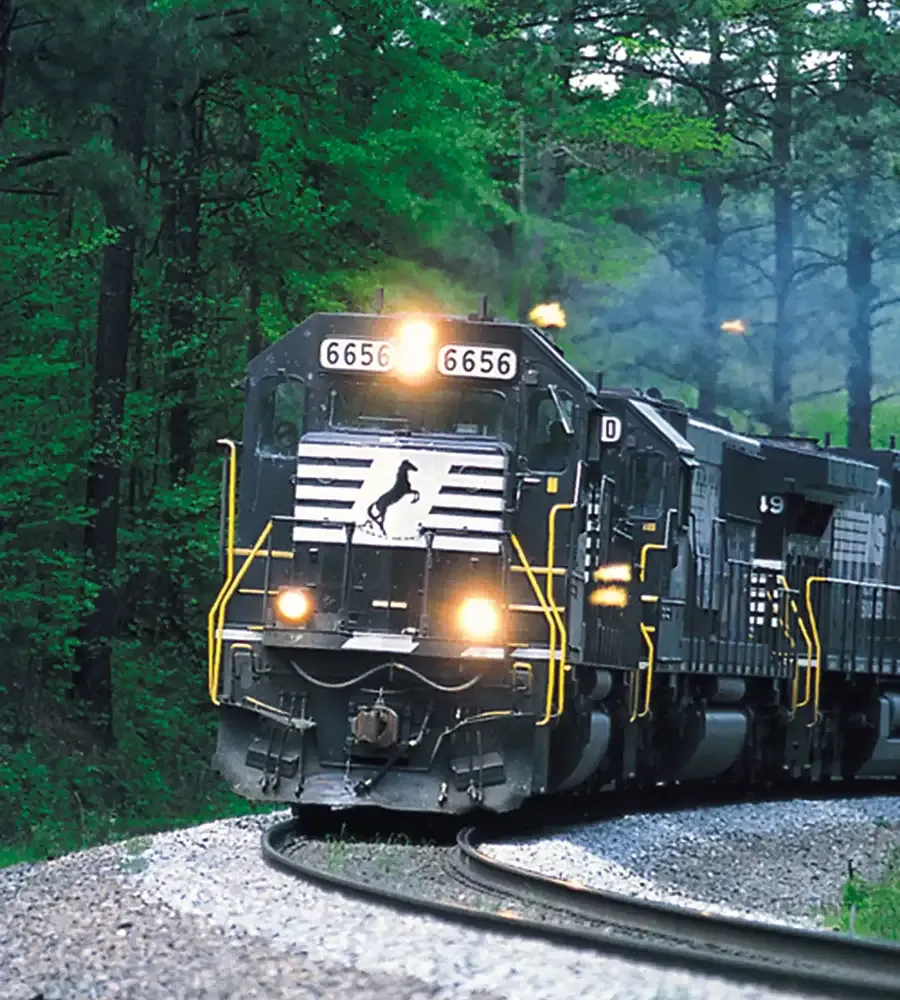- By TOP CHINA FREIGHT
- September 18, 2025
- Rail Freight, Shipping
Table of Contents
The freight train from China to Europe has become one of the most efficient transport options, bridging cost and transit time between air and sea freight. With growing trade along the Belt and Road Initiative, rail freight offers importers and exporters a powerful logistics solution.

What is the freight train from China to Europe?
Main Routes:
Connects Chinese cities like Chongqing, Wuhan, Xi’an, and Zhengzhou with European hubs such as Duisburg, Hamburg, Warsaw, and Madrid.
Coverage:
Spans over 10,000 kilometers across more than 20 countries, serving as a key trade corridor.
Transit Time:
Takes 15–20 days, much faster than sea freight (30–45 days).
Environmental Advantage:
More eco-friendly than air freight with lower carbon emissions.
Why choose rail over sea and air freight?
Choosing the right shipping method requires weighing cost, speed, and cargo type. Rail freight offers a middle ground between sea and air transport.
| Shipping Method | Average Cost | Transit Time | Best For | Pros | Cons |
|---|---|---|---|---|---|
| Air Freight | High | 5–10 days | High-value, urgent cargo | Fastest, reliable schedules | Expensive, limited volume |
| Sea Freight | Low | 30–45 days | Bulk, heavy goods | Cheapest, handles large volumes | Slow, port delays |
| Rail Freight | Medium | 15–20 days | General cargo, electronics, machinery | Balance of cost and time, eco-friendly | Limited capacity compared to sea |
As seen above, rail freight is ideal for shippers who cannot afford long sea transit but find air freight costs too high.
How long does rail freight take from China to Europe?
Transit times vary depending on origin and destination. On average, freight trains take 15–20 days. However, weather, border inspections, and customs clearance can slightly impact delivery schedules.
| Route | Average Transit Time |
|---|---|
| Chongqing – Duisburg | 16–18 days |
| Xi’an – Warsaw | 14–16 days |
| Wuhan – Hamburg | 17–20 days |
| Zhengzhou – Madrid | 20–22 days |
These consistent schedules allow businesses to maintain steady supply chains while avoiding long delays associated with sea shipping.
What is the cost of a freight train from China to Europe?

Costs depend on cargo type, container size, and delivery destination. On average, shipping a 40ft container costs between $8,000–$10,000. Less-than-container load (LCL) is also available for smaller shipments, priced per cubic meter or per ton.
Although more expensive than sea freight, rail transport often results in lower total logistics costs when factoring in faster cash flow and reduced warehousing expenses.
What cargo is best suited for rail freight?
Not all goods are ideal for train transport. Rail freight is most suitable for:
- Electronics and high-tech goods
- Automotive parts and machinery
- Clothing and textiles
- Pharmaceuticals (with temperature-controlled containers)
- General consumer products
Hazardous materials, oversized cargo, or perishable goods may face restrictions. Therefore, it is essential to consult with a logistics expert before booking.
What customs documents are required?

Smooth customs clearance is vital for avoiding delays. Below is a checklist of the most common documents needed for the freight train from China to Europe:
| Document | Purpose |
|---|---|
| Commercial Invoice | Declares value of goods |
| Packing List | Lists cargo contents |
| Bill of Lading (Rail Waybill) | Transport contract |
| Certificate of Origin | Verifies product origin |
| Import Licenses (if required) | Certain regulated goods |
| Customs Declaration Forms | For border clearance |
Having complete and accurate paperwork reduces inspection risks and ensures faster border crossing.
How reliable is the freight train from China to Europe?
Reliability is one of the biggest advantages of rail transport. Trains run on fixed schedules and are less affected by weather disruptions compared to sea shipping. Moreover, advanced GPS tracking allows real-time updates, giving businesses full visibility of their cargo during transit.
Additionally, rail freight offers reduced risk of congestion compared to major ports, which often face delays. This makes rail a preferred option for companies with strict delivery deadlines.
What are the pros and cons of rail freight?
Like all shipping methods, rail freight has advantages and limitations.
| Pros | Cons |
|---|---|
| Faster than sea freight (15–20 days) | More expensive than sea freight |
| Cheaper than air freight | Limited routes and capacity |
| Eco-friendly, lower carbon emissions | Not suitable for all cargo types |
| Stable schedules and reduced delays | Border customs may cause minor delays |
By carefully assessing shipment needs, businesses can decide whether rail freight is the right choice.
Case study: A European electronics importer

How should businesses plan rail freight shipments?
Limited train capacity means early reservations secure space.
Ensure invoices, packing lists, and customs forms are accurate.
Rail transport involves handling at multiple hubs; sturdy packaging prevents damage.
Stay updated with transit times and potential customs checks.
Experienced partners manage logistics and streamline the process.
Conclusion
The freight train from China to Europe has become a vital logistics solution for companies seeking a balance between speed and cost. With transit times of 15–20 days, competitive pricing compared to air freight, and reliable schedules, it offers a strong alternative to traditional shipping methods. Businesses moving electronics, machinery, or consumer goods benefit most, especially when supported by experienced freight forwarders who handle customs and logistics challenges.
Need a Shipping Quote?
If you want expert guidance and peace of mind, our team is ready to assist.
TJ China Freight offers tailored solutions to help businesses of all sizes ship more reliably from China.

FAQ
Q1:How many trains run from China to Europe each week?
On average, over 60 trains operate weekly, connecting multiple Chinese and European cities. Schedules vary, but most routes offer frequent departures.
Q2:Can small businesses use rail freight or only large companies?
Both large and small businesses can ship via rail. LCL (less-than-container load) allows smaller shipments to share container space, making it cost-effective for SMEs.
Q3:Are temperature-controlled containers available for sensitive goods?
Yes, refrigerated and temperature-controlled containers are available for pharmaceuticals, food, and other perishable products. However, booking should be done in advance.
Q4:Do freight trains face delays at borders?
Occasionally, customs inspections may cause minor delays. However, proper documentation and experienced freight forwarders help minimize risks.
Q5:Is rail freight more eco-friendly than sea or air?
Yes, rail freight produces significantly fewer carbon emissions than air freight and is greener than sea freight, making it an eco-conscious choice.
